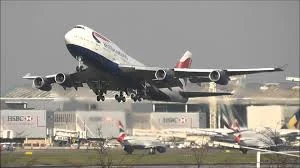Airplanes often evoke mixed reactions from travelers around the world. Some find it exhilarating, others boring, and many experience high levels of anxiety before and during a flight. However, despite their concerns, airplanes remain statistically the safest mode of transportation available today. Here, we want to examine what makes air travel the safest form of transportation despite so many people being afraid of flying.
Low Accident Rates
One of the primary reasons airplanes are statistically the safest mode of transportation is their incredibly low accident rates. Compared to other forms of transportation, such as cars or motorcycles, the likelihood of an individual being involved in an airplane crash is astonishingly lower. According to the International Air Transport Association (IATA), the accident rate in commercial aviation was 0.13 per million flights in 2021. This means that for every million flights, there were only 0.13 accidents, a testament to airplane safety.
In contrast, automobile accidents occur at an astonishing rate, with staggering fatalities. In a study by the Austin personal injury attorneys at Shaw Cowart LLP, it is estimated that there are 6 million car accidents occur in the U.S. each year, with an average of 102 fatalities daily! This figure is stark compared to the zero deaths per 100 million passenger air travel miles each year from 2002 to 2020.
Strict Regulatory Oversight And Safety Standards
Another critical factor contributing to the safety of air travel is the strict regulatory oversight imposed by organizations like the Federal Aviation Administration (FAA). These regulatory bodies enforce stringent safety standards that airlines and manufacturers must adhere to, ensuring that airplanes are built and maintained to the highest specifications.
The aviation industry is one of the most regulated industries in the world and airplanes undergo routine inspections and maintenance checks to identify potential problems before they escalate into serious safety concerns. These checks include everything from engine performance assessments to inspection of the aircraft's structural integrity. If an aircraft does not meet specific safety criteria they are grounded until necessary repairs or improvements are made.
Advanced Technology And Equipment Redundancy
While all aspects of transportation have been enhanced by technological advancements, the technology in aviation supersedes any other method of travel. Modern commercial aircraft are equipped with state-of-the-art systems that can detect and correct potential issues long before they pose a threat. From advanced autopilot systems that can take over in case of pilot incapacitation to radars that allow pilots to avoid dangerous weather conditions, the integration of technology in aviation has established airplanes as the safest motorized method of transportation.
One of the key safety features of commercial airplanes is the concept of redundancy. In aviation, critical systems such as the engines, avionics, and hydraulics, have multiple backups in case of a failure. If one engine fails, modern airplanes are designed to fly safely on the remaining engine. This redundancy ensures that even if a component malfunctions, the aircraft can continue its journey without posing a significant risk to passengers.
Highly Skilled Personnel And Crew Training
The people who operate, maintain, and control airplanes are among the most highly trained transportation professionals in the world. Unlike everyday car drivers, pilots undergo extensive training that includes simulation exercises, technical knowledge assessments, and rigorous medical evaluations. They are required to maintain their certifications through regular training and assessments, ensuring that they are always prepared to handle any situation.
Moreover, flight crews are trained to handle emergencies calmly and efficiently. Flight attendants are not only there to serve passengers but also to manage in-flight safety procedures, from assisting in medical emergencies to overseeing evacuations in the event of an emergency landing. Their training in emergency protocols, combined with their familiarity with the aircraft’s safety features, provides an added layer of protection for passengers.
Continuous Improvements In Aviation Safety
The aviation industry prides itself on its accomplishments in safety and continues to evolve with each accident or near-miss serving as a learning opportunity to further improve safety. After an incident, thorough investigations are conducted to determine the cause and prevent similar occurrences in the future. This culture of constant improvement has led to significant advancements in airplane design, pilot training, and operational procedures, all of which contribute to the ongoing safety of air travel.
Despite common fears and anxieties, flying remains the safest way to travel by a long shot, with fewer crashes and fatalities than any other mode of transportation. While no form of travel is entirely without risk, air travel offers an unparalleled safety record, and passengers can rest assured that they are in safe hands when they board a flight. Whether crossing continents or flying domestically, the likelihood of arriving safely at the destination remains exceptionally high, further cementing air travel's place as the safest way to move people around the globe.

